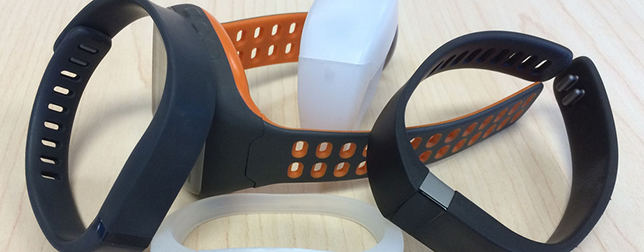Health wearables are becoming part of our daily life. The industry is going through a metamorphosis not just because of big leaguers like Apple, Samsung and Fitbit, but because of big innovations.
One such innovation comes from Israel that self-repair our body and requires only body heat to run.
Scientists from the Wolfson Faculty of Chemical Engineering at the Technion-Israel Institute of Technology in Haifa have built a system of wearable monitors with sensors that can detect vital signs as early markers for disease.
Read more This Wearable Device Wants You to Sweat So that It Can Monitor Your Health
While this is not the first health-monitoring wearable, this setup is a bit more unique for the fact that it’s powered by the wearer’s body heat and from energy generated when the wearer moves. But that’s not all. The system can even repair itself if it becomes torn or scratched. Therefore, it would potentially be cost effective for hospitals and would also make it an important and non-invasive monitoring tool for long-term health studies.
The wearable system could mean painless health monitoring for patients, substantially lower medical expenses, and provide large-scale and comprehensive information for epidemiological studies, says Professor Haick and postdoctoral researcher Weiwei Wu, who invented the system.

“Normal health is characterized by known markers such as 60 to 100 heartbeats per minute and seven to eight breaths per minute. If we detect dramatic changes in the various markers in real time, we can refer the patient to a more comprehensive diagnosis and prevent disease from developing or worsening,” said Haick.
Read more This Gadget Can Communicate Human Emotions Through Touch
The Technion wearable monitoring system is made of advanced self-healing materials, and would never need to be turned off for repair or charging.
Haick has already experimented with nanotech medical diagnostic systems including the NaNose for detecting cancer and other diseases from breath samples with 86% accuracy on average. He heads the SNIFFPHONE consortium, which integrates this system into a cellphone to enable uploading the data to the cloud for medical analysis.
The components of the new system already exist, but the researchers haven’t developed the platform that integrates them all. The system requires a complex arrangement of sensors, a small flexible circuit board which would measure the markers, and various parts that process the info and send it to the cloud. Haick’s research group is currently working to bring life to this potentially lifesaving wearable system.
Wu, now a professor in the School of Advanced Materials and Nanotechnology at Xidian University in China, was a post-doctoral researcher in Haick’s lab.
Haick and Wu presented their results in the journal Advanced Materials.












